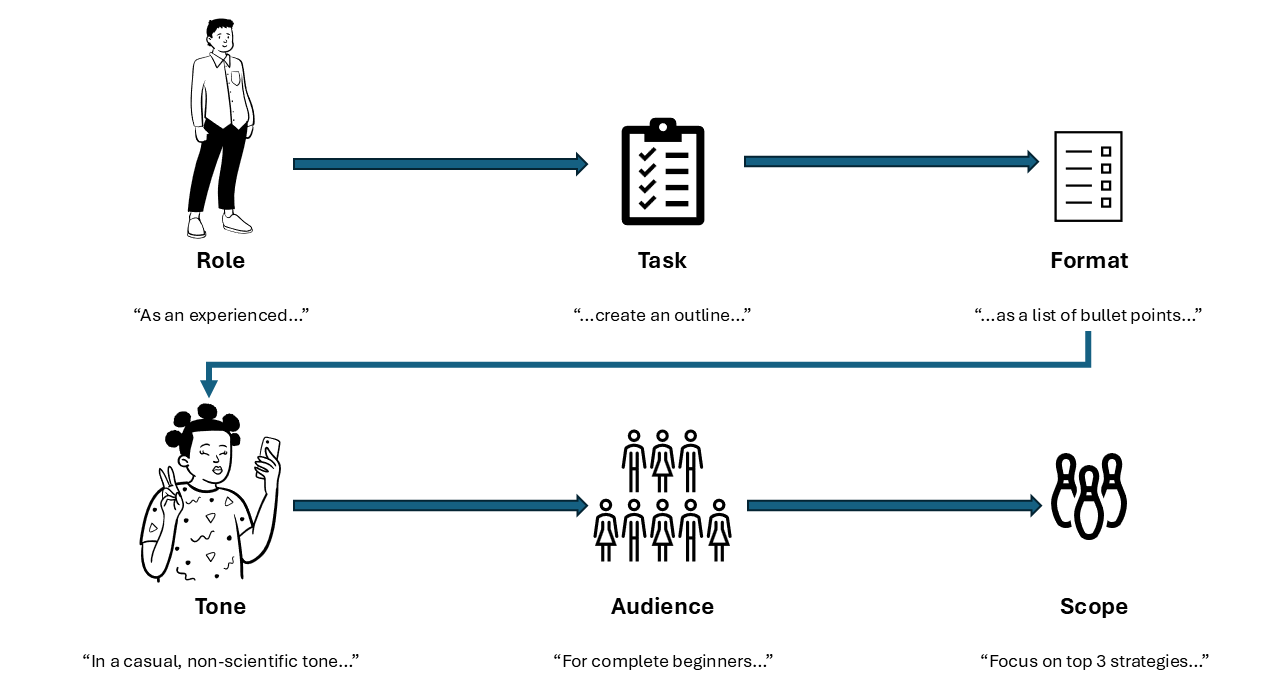Let’s be honest – writing is hard! Whether you’re crafting a business proposal, working on a blog post, or trying to get your thoughts organized for a presentation, that blank page you are staring at can feel like your biggest enemy. But what if I told you that AI tools like ChatGPT could become your writing partner, helping you break through blocks and create better content faster?
I’m not talking about having AI write everything for you (that’s a recipe for generic, robotic content). Instead, I’m talking about using AI as a sophisticated writing assistant – think of it as having a really smart intern who’s great at brainstorming, organizing, and polishing your ideas.
Why Most People Get AI Writing Wrong?
I’ll tell you this straight away: most people approach AI writing tools completely wrong. I’ve been doing this for a while, too. They throw a simple question at ChatGPT, such as: “Write me a blog post about remote work” and expect magic to happen. What they get instead is generic content that sounds like it was written by, well, a robot.
The secret? AI is most effective when you treat it as a collaborative partner, rather than a magic content generation machine. You need to have conversations with it, give it direction, and iterate on ideas together.
The Building Blocks of Better AI Prompts
Before we dive into the writing process, let’s talk about how to actually communicate with AI effectively. A good prompt has several key ingredients:
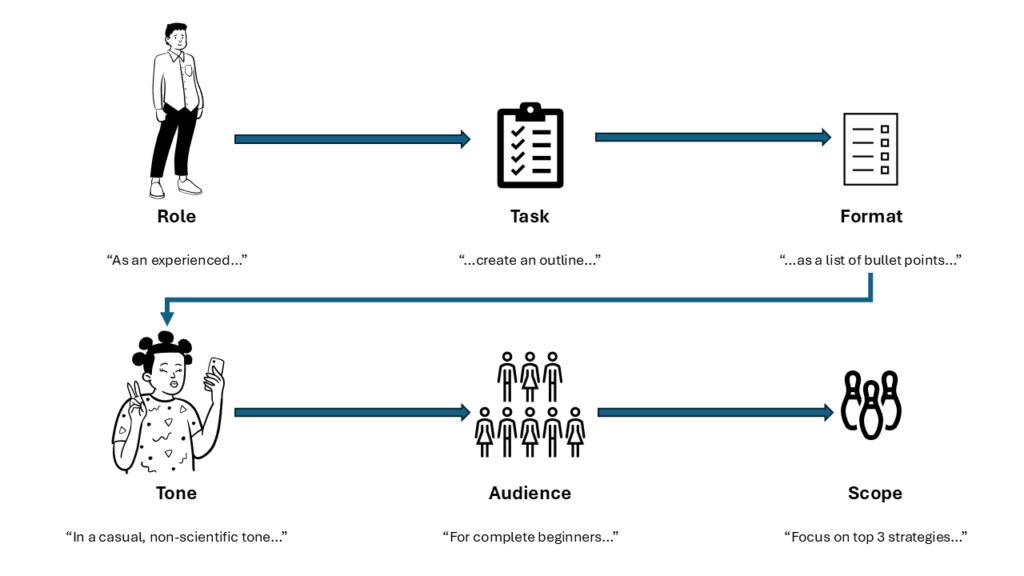
- Role – Tell the AI who it should be.
- “As an experienced marketing manager…”
- “As a fitness coach with 10 years of experience…”
- Task – Be specific about what you want.
- “Write a report”
- “Create an outline”
- “Generate ideas for…”
- Format – How should the output look?
- “As bullet points”
- “In a table”
- “As a step-by-step guide…”
- Tone – What’s the vibe?
- “Professional”
- “Casual and friendly”
- “Enthusiastic”
- “Academic…”
- Audience – Who’s reading this?
- “For busy executives”
- “For complete beginners”
- “For technical experts…”
- Scope – Set boundaries.
- “Keep it under 500 words”
- “Focus on the top 3 strategies”
- “Cover the basics only…”
Let me show you the difference:
Bad prompt: “Write about email marketing”
Good prompt: “As an experienced digital marketing consultant, write a beginner’s guide to email marketing. Format it with clear headings and bullet points. Use an encouraging, friendly tone for small business owners who are just getting started. Keep it focused on the 5 most important strategies they can implement this week.”
See the difference? The second prompt gives the AI a clear role, specific instructions, and sets expectations.
The Four-Stage Writing Framework
Here’s where things get interesting. Instead of trying to write everything in one run, break your writing process into four distinct stages. Think of it like building a body:
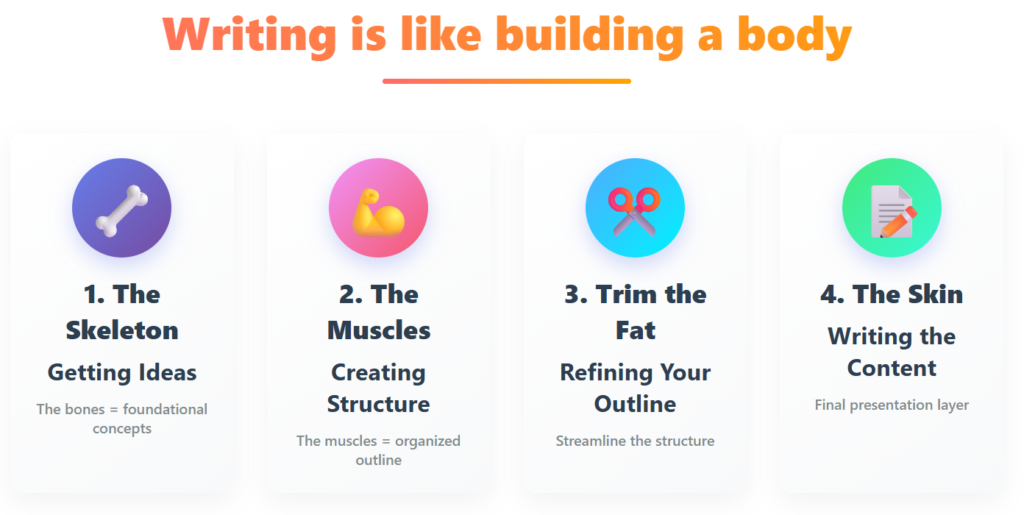
Stage 1: The Skeleton (Getting Ideas)
This is where you gather all your raw material – the bones of your piece. The goal isn’t to write yet – it’s just to collect ideas.
One powerful technique is using “three modes of persuasion” (based on Aristotle’s ethos, pathos, and logos) to generate comprehensive ideas:
- Head (Logic): What are the facts, data, and logical arguments?
- Heart (Emotion): What are the emotional angles and human stories?
- Behavior (Ethics): What are the practical actions and ethical considerations?
Let’s say you’re writing about switching to renewable energy for businesses. You might ask:
- “What are the factual, data-driven reasons a business should consider renewable energy?”
- “What are the emotional and motivational factors that drive businesses to go renewable?”
- “What are the practical steps and ethical considerations for businesses making this switch?”
This approach ensures you’re not missing major angles and provides you with rich, multi-dimensional content to work with.
Stage 2: The Muscles (Creating Structure)
Now you take those scattered ideas and build them into a motivated outline – the muscles that give your content shape and strength.
This is where the “Repeat and Refine” technique becomes your best friend. Start broad, then get specific:
“Give me 10 section ideas for an article about remote team management”
Once you get those options, pick the most promising and dig deeper:
“Give me 10 variations of the section about ‘Building Trust in Remote Teams'”
Then get even more specific:
“Create a detailed outline for ‘Building Trust in Remote Teams’ that covers both daily practices and long-term strategies”
Pro tip: If you have existing content (like a recorded presentation or meeting notes), you can just paste your rough content and ask: “Create a clear, organized outline from this material, including timing estimates for a 45-minute presentation.”
Stage 3: Trim the Fat (Refining Your Outline)
This is the stage most people skip, although it’s crucial. Take your outline and ruthlessly edit it. Ask yourself:
- Can each section be covered in 4-5 pages or 10 minutes of speaking?
- Does each section solve a specific problem?
- What should stay, what should go, and what should be moved to an appendix?
But, the key thing to keep in mind is: do this trimming yourself, not with AI! You understand your audience and goals better than any AI tool.
Stage 4: The Skin (Writing the Content)
Finally, we get to the actual writing. But even here, we don’t have to start from scratch.
Try the so-called “Tent-Pole Sentences” technique:
- Write out the key points you want to make in each section as simple sentences
- Ask AI to expand each sentence into a full paragraph
- Edit and refine those paragraphs to match your voice
For example, if you’re writing about productivity tips, your tent-pole sentences might be:
- “Most people confuse being busy with being productive”
- “The best productivity system is the one you’ll actually use”
- “Focus blocks are more valuable than scattered work sessions”
Then ask: “Expand each of these sentences into a compelling paragraph for a blog post about productivity. Use a conversational, slightly humorous tone for working professionals.”
Advanced Techniques: AI as Your Writing Toolbox
Once you’ve got the basics under your belt, AI becomes incredibly useful for specific writing tasks:
- Grammar and Style: “Clean up the grammar in this paragraph while keeping the casual tone”
- Vocabulary: “Give me 10 alternatives to the word ‘important’ that would work in this context”
- Tone Adjustment: “Rewrite this email to sound more professional but still friendly”
- Format Conversion: “Turn this technical explanation into a simple analogy that a 12-year-old could understand”
- Perspective Shifts: “Rewrite this section in first person and change it to future tense”
The Conversation Approach
Here’s what separates good AI writing from great AI writing: treating it like a conversation, not a one-shot request.
Instead of: “Write me a marketing plan”
Try this flow:
- “I need to create a marketing plan for a local bakery. What are the key sections I should include?”
- “Great! Now focus on the social media section. What platforms would work best for a local bakery?”
- “Instagram sounds perfect. Give me 10 content ideas for an Instagram strategy for this bakery”
- “I love the ‘behind-the-scenes baking process’ idea. Give me 5 variations of that concept”
See how much better that conversation produces targeted, useful content?
Creating Visual Elements
Don’t forget that AI can help with more than just text. You can create simple diagrams and flowcharts:
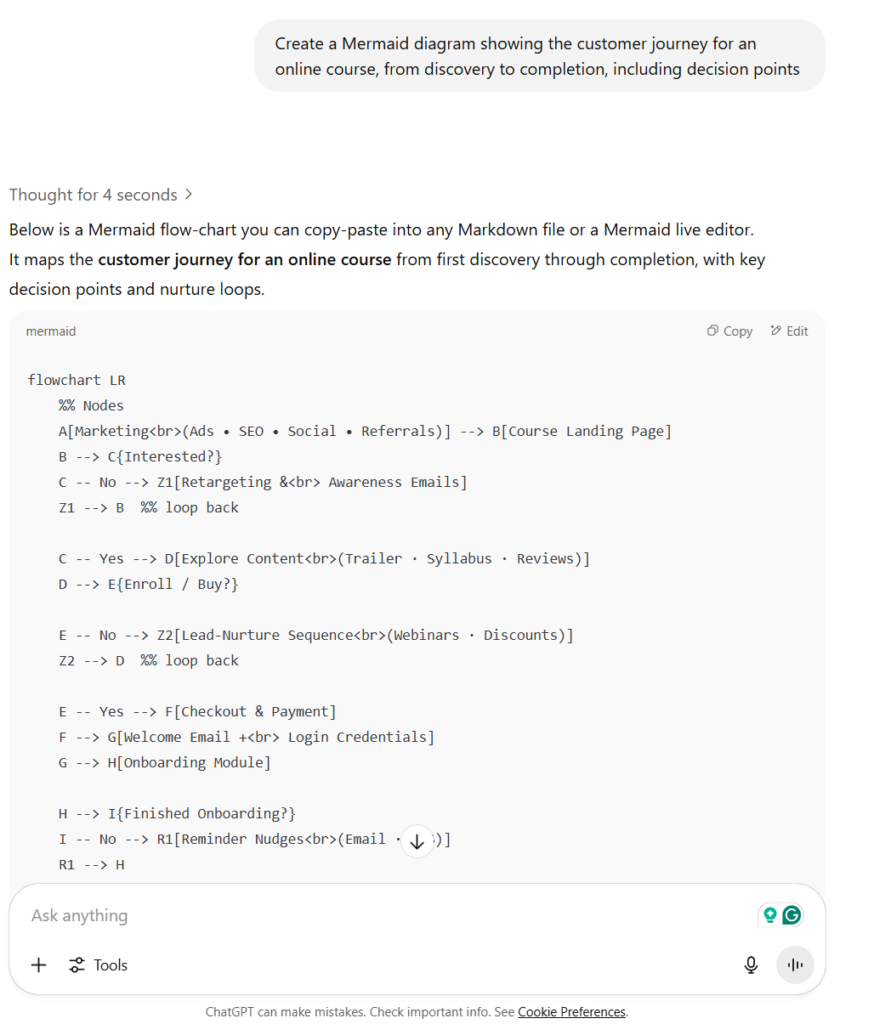
“Create a Mermaid diagram showing the customer journey for an online course, from discovery to completion, including decision points”
This gives you visual elements that can make your writing more engaging and easier to follow.
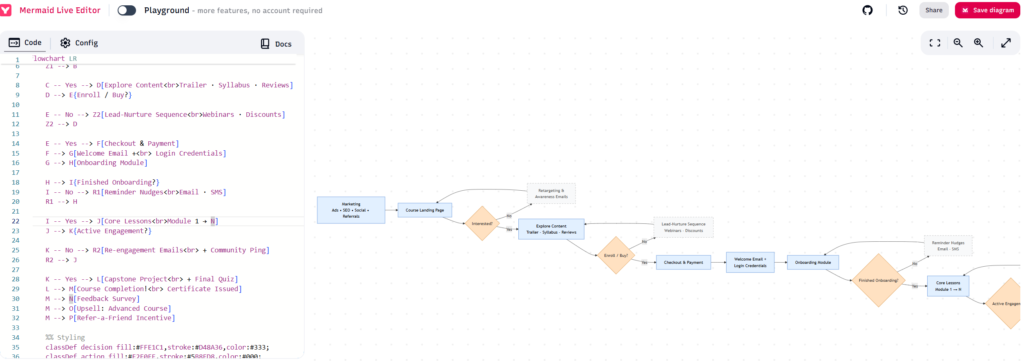
Real-World Example: Planning a Workshop
Let me walk you through how this might work in practice. Imagine you need to plan a workshop on time management:
Stage 1 (Ideas):
- “What are the logical, research-backed time management strategies?”
- “What emotional blocks do people face with time management?”
- “What are the practical first steps someone can take today?”
Stage 2 (Structure):
- “Create an outline for a 3-hour time management workshop based on these ideas”
- “Add timing estimates and interactive elements to this outline”
Stage 3 (Refine):
- You need to do this manually, trimming sections that don’t fit your audience
Stage 4 (Write):
- “Write engaging opening remarks that acknowledge people’s frustration with time management advice”
- “Create 3 practical exercises for the ‘energy management’ section”
What to Watch Out For?
A few important warnings to bear in mind:
- Don’t trust AI blindly – Always fact-check and verify information, especially statistics or technical details.
- Avoid over-reliance – Use AI to augment your thinking, not replace it. The best ideas still come from your unique perspective and experience.
- Mind the voice – AI tends toward a generic, corporate tone. Always edit to match your authentic voice.
- Check for accuracy – AI can confidently present wrong information. When in doubt, verify with reliable sources.
Sticking All Together
The key to success with AI writing tools isn’t learning fancy prompts or tricks – it’s developing a systematic approach that you can repeat. Begin with simple projects and gradually progress to more complex writing tasks.
Remember, AI is like having a really smart research assistant and brainstorming partner. It’s not going to replace your creativity or judgment, but it can dramatically speed up the parts of writing that used to bog you down: getting started, organizing ideas, and polishing drafts.
The goal isn’t to let AI do your writing for you. It’s to spend less time struggling with blank pages and more time crafting ideas that matter. When you approach it as a collaboration rather than a shortcut, that’s when the real magic happens.
Your Next Steps
Ready to try this approach? Here’s what I recommend:
- Pick a simple project – Start with something low-stakes, like a blog post for example
- Work through the four stages – Don’t try to write everything at once
- Experiment with different AI tools – ChatGPT, Claude, Gemini – they each have strengths
- Keep a prompt library – Save the prompts that work well for you
- Practice the conversation approach – Treat each writing session as a back-and-forth dialogue
The future of writing isn’t about humans versus AI – it’s about humans working with AI to create better content faster. Once you figure it out, you’ll wonder how you ever wrote any other way.
Thanks for reading!
P.S. This article was created by AI, applying techniques covered in the article:)
Last Updated on July 2, 2025 by Nikola

